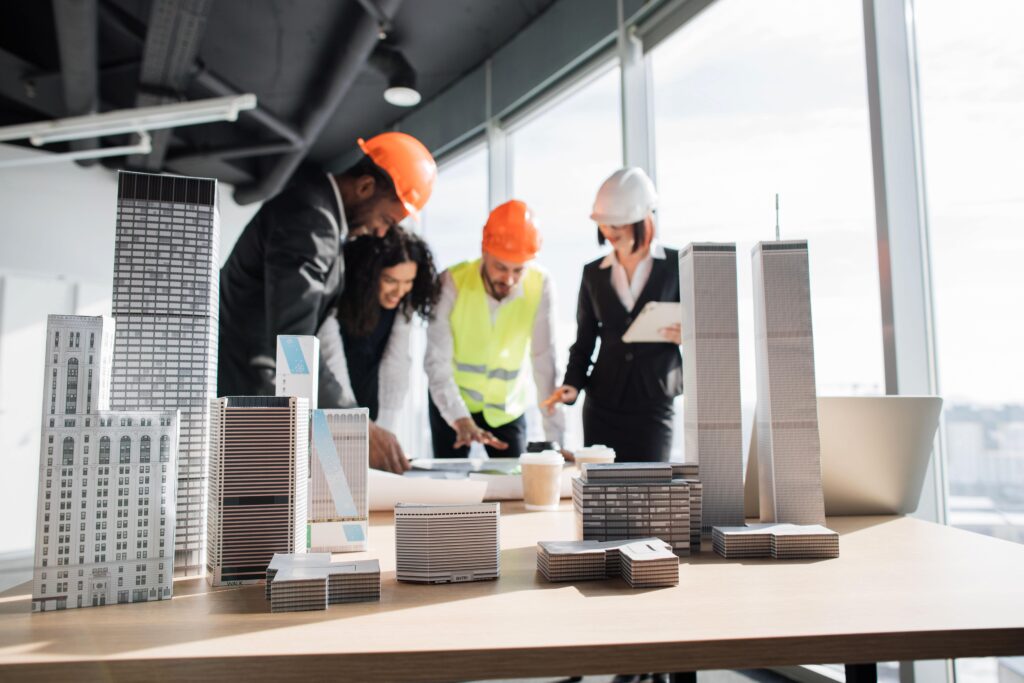
Building Information Modeling (BIM) is a revolutionary technology that is transforming the architecture, engineering, and construction (AEC) industry. BIM allows architects, engineers, and contractors to create digital models of buildings that are accurate, detailed, and intelligent. BIM technology has numerous benefits for building design and construction, including better collaboration, cost savings, and improved project outcomes.
The use of BIM technology in building design can help optimize the process in several ways.
First, BIM technology allows architects and designers to create 3D models of a building, which can be used to explore different design options and visualize the final result. This can help identify potential issues early in the design process, such as conflicts between different systems, and help minimize rework later on.
Second, BIM technology enables design teams to coordinate different disciplines, such as architecture, engineering, and construction, to work together in a more integrated and collaborative way. This can help reduce errors and omissions and streamline the design process.
Third, BIM technology allows building owners and operators to access valuable data about the building throughout its lifecycle. For example, information about the building’s energy consumption, maintenance history, and occupancy patterns can be captured and analyzed using BIM technology, helping to optimize the building’s performance and reduce costs.
Overall, BIM technology is a powerful tool for optimizing building design, helping to improve collaboration, reduce errors, and enhance the building’s overall performance throughout its lifecycle.
In this blog post, we’ll explore how BIM technology can help you optimize your building design.
What is BIM Technology?

BIM technology is a process that involves creating digital models of buildings that are based on real-world data. The models are intelligent and contain information about the building’s geometry, materials, and systems. BIM technology allows architects, engineers, and contractors to collaborate on the design of a building in a virtual environment. This collaboration can help identify potential issues and resolve them before construction begins.
Benefits of BIM Technology for Building Design BIM technology has numerous benefits for building design, including:
1. Improved Collaboration: BIM technology allows architects, engineers, and contractors to work together on a project in a virtual environment. This collaboration can help identify potential issues and resolve them before construction begins. It also allows all parties involved to have access to the same data and information, reducing the risk of miscommunication.
2.Better Visualization: BIM technology provides a 3D visual representation of the building, which allows designers to see the building in a more realistic way. This helps in better understanding the building’s layout and identifying potential design flaws.
3. Cost Savings: BIM technology can help reduce construction costs by identifying design issues and potential problems early on in the design process. This allows for changes to be made before construction begins, reducing the need for costly rework.
4. Improved Project Outcomes: BIM technology helps to reduce errors and omissions in the design process, which can lead to improved project outcomes. This includes reduced construction time, improved construction quality, and reduced project costs.
How BIM Technology Can Help Optimize Building Design BIM technology can help optimize building design in several ways, including:

| Accurate Quantity Takeoffs: | BIM models contain accurate data on the number of materials required for a building, which can be used to generate accurate quantity takeoffs. This helps in the accurate estimation of material requirements and reduces waste. |
|---|---|
| Clash Detection: | BIM technology allows designers to identify potential clashes between different building elements, such as pipes, electrical wires, and structural components. This can help in identifying potential issues and resolving them before construction begins. |
| Improved Energy Efficiency: | BIM models can be used to simulate the energy performance of a building, which can help in identifying potential energy savings opportunities. This can help in reducing the building's carbon footprint and reducing operating costs. |
| Enhanced Maintenance and Operations | BIM models can be used to store information about a building's components and systems, which can be accessed by facility managers during the building's lifetime. This information can be used to plan for maintenance and upgrades, improving the building's long-term performance. |
Building Information Modeling (BIM) technology has become increasingly popular in recent years, especially in the architecture, engineering, and construction (AEC) industry. Here are some statistics related to BIM technology:
| Object | Annual Growth Rate | Estimated cost |
|---|---|---|
| BIM market size | 12.5%. Annual Growth Rate | USD 8.8 billion by 2025 |
| BIM collaboration among project stakeholders. | 60% of architecture, engineering, and construction (AEC) | - |
| BIM is used by | 87% of construction professionals | 79% of engineers |
Conclusion:
BIM technology has numerous benefits for building design, including improved collaboration, cost savings, and improved project outcomes. BIM technology can help optimize building design by providing accurate quantity takeoffs, clash detection, improved energy efficiency, and enhanced maintenance and operations. By adopting BIM technology, architects, engineers, and contractors can create better buildings that are more efficient, cost-effective, and sustainable.
Request a Quote Today!
Need immediate attention?
JCL Measure
Hours
| Mon | 08:00 am – 06:00 pm | |
| Tue | 08:00 am – 06:00 pm | |
| Wed | 08:00 am – 06:00 pm | |
| Thu | 08:00 am – 06:00 pm | |
| Fri | 08:00 am – 06:00 pm | |
| Sat | Closed | |
| Sun | Closed |
